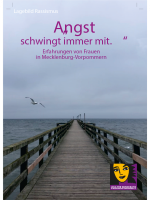
MV - Ein Land zum Leben?
MV - A land to live in?
Mecklenburg-Western Pomerania is a federal state of particular contrasts: breathtaking landscapes and low wages, a place of longing and emigration, artists of life and AfD voters, traditions and upheavals, many new bus stops and few buses.
With 69 inhabitants per square kilometre, Mecklenburg-Western Pomerania has the lowest population density and, since the district reform in 2011, the largest administrative districts in Germany. This rural space is in many ways an important contextual condition for the everyday nature of racist discourses and practices: it produces close-knit communities in which boundaries and exclusions can be drawn more easily and is often characterised by an incomplete public infrastructure. The close social connections, the mutual obligations and the demarcations act like a magnifying glass on the dynamics of social "othering" processes.
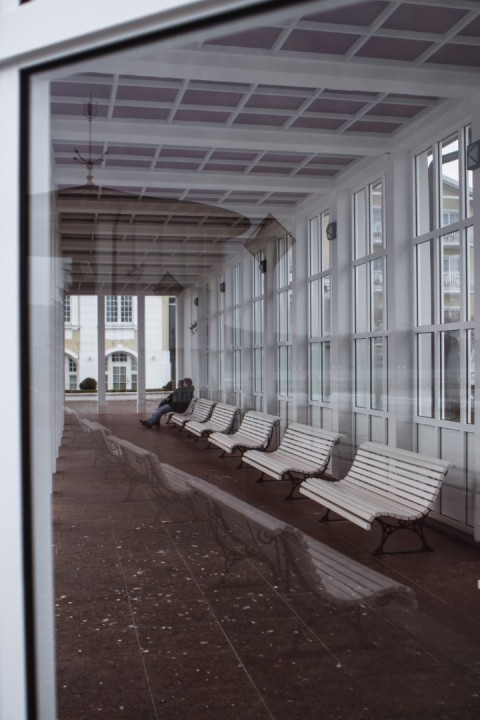
In relation to the population, the fewest people with a history of migration and also the fewest refugees live here. This is often cited as a reason why people in the state find it difficult to overcome prejudices and accept people who move here.
If you look at the history of the areas of today's Mecklenburg-Western Pomerania, this does not provide enough of an explanation. Mecklenburg-Western Pomerania is also a region that is and will be characterised by diverse migration processes:
So socially I can really say what I notice again very clearly, this strong detachment of people and also the strong fundamental scepticism. Sceptical and rather, how should I put it, yes, everything that is somehow new and it doesn't even have to have anything to do with my skin colour, but simply the fact that we have just moved into this street here, that tends to generate rejection, a bit of resistance at first. And you can just feel it
Migration in the north-eastern border region
Migration in the north-eastern border region // In some villages in the Vorpommern-Greifswald district, Polish immigrants form the majority of the village community, especially in the age group up to 50 years. The reasons for this can be found in political developments and the structural conditions in the region.
After the political change in 1989, this region was also severely affected by the liquidation of the GDR and the associated dismantling of economic and public structures. High unemployment and a lack of prospects led to a large exodus of mainly young, well-educated people (especially women). Deserted villages and empty houses in small towns characterised the rural landscape. On the other side of the border, on the other hand, the economic development of the Szczecin metropolitan region gained considerable momentum and has since increased the pressure in the property and housing sector.
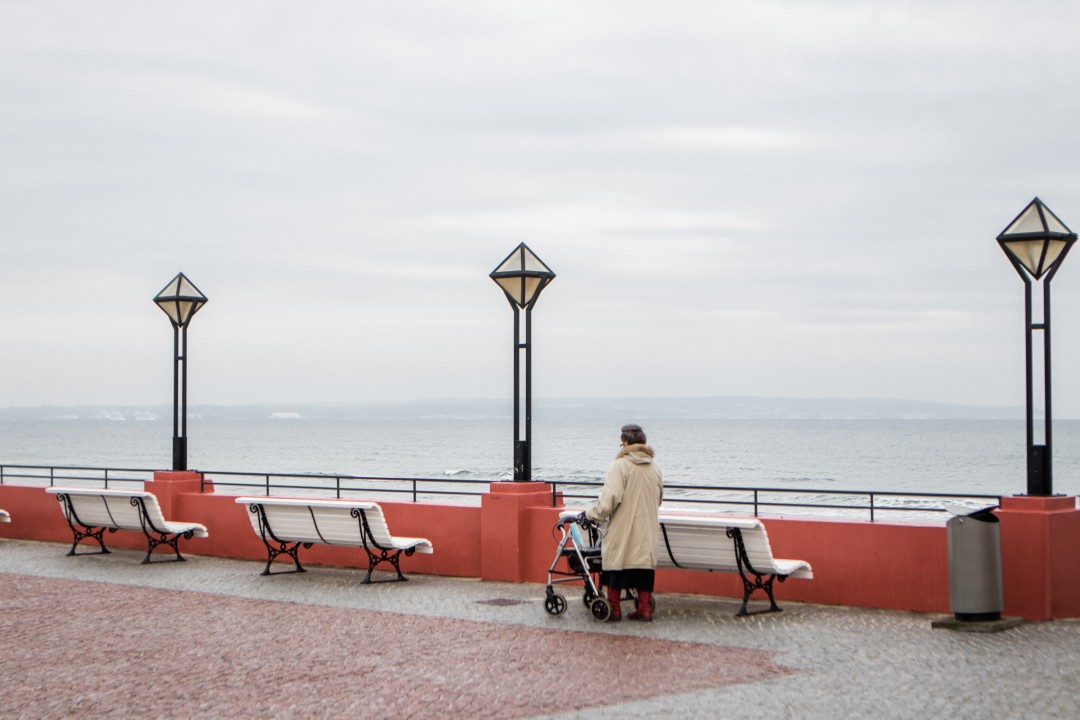
With Poland's accession to the EU in 2004 and the abolition of border controls following its inclusion in the Schengen area in 2007, a new form of migration developed in German-Polish relations. Inexpensive housing and good connections to the Szczecin metropolitan area encouraged young, well-educated people with children in particular to settle in Vorpommern-Greifswald.
Some municipalities and communities in the district benefit greatly from this migration dynamic in the German-Polish border region. After all, the influx revitalises the communal, economic and social structures of the region.
The social integration processes are progressing, but are described as mostly asymmetrical, as they are one-sidedly supported by the Polish immigrants. The language barrier makes personal encounters difficult and prevents cultural exchange. However, this is necessary in order to break down historical, collectively anchored stereotypes. The children of Polish parents in particular have to deal with anti-Polish attributions, devaluation and marginalisation in their everyday lives.
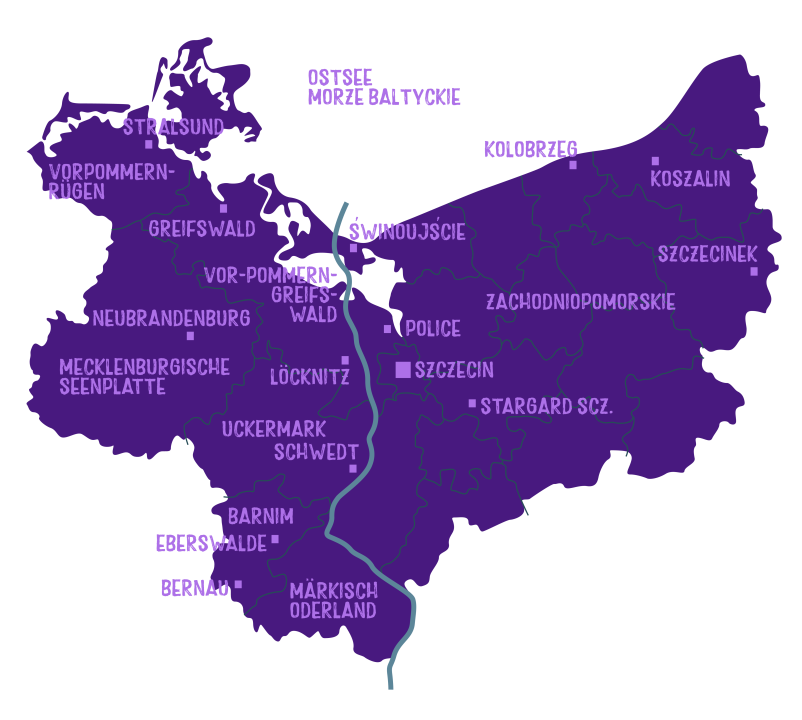
https://www.kreis-vg.de/Wirtschaft/Euroregion-Pomerania
Refugee movements in 2015/2016
Refugee movements since 2015 // In 2015, there was a large movement of refugees to Europe. The people came mainly from Syria (where a civil war has been raging since 2011) but also from Kosovo, Serbia, Macedonia, Afghanistan and Iraq. There were a total of 23,080 registered asylum seekers in Mecklenburg-Western Pomerania in 2015, 13,520 of whom were Syrians. In the meantime (2022), however, there is hardly any empirically proven information about the people who came to Mecklenburg-Western Pomerania in 2015/2016 that goes beyond status and origin.
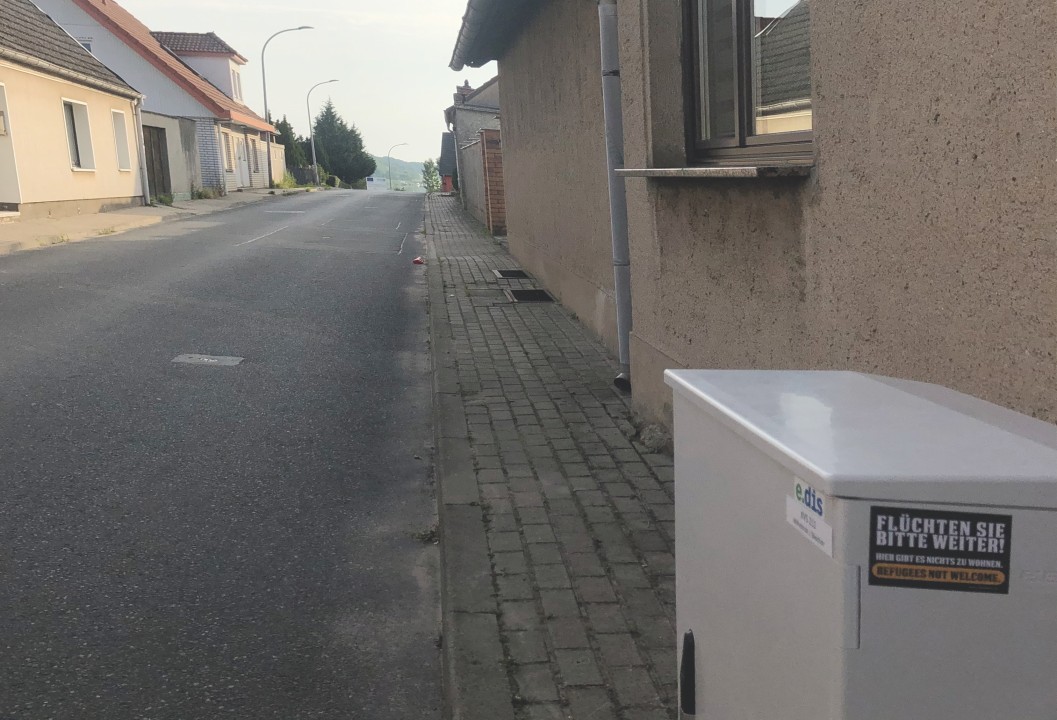
Little data was collected about who of the refugees stayed in Mecklenburg-Western Pomerania and how these people live here. It is difficult to say to what extent the "integration" of the new arrivals has been successful, how this can be measured and how it should be organised.
Russian Germans
Russian Germans // Ethnic German repatriates are people who have moved to Germany as part of an admission process. They are people of German descent who have lived for generations in Eastern Europe and partly in Asia and immigrated to Germany, especially after 1990. The countries of origin include, for example: Poland, Romania, the former Czechoslovakia, the former Yugoslavia and areas of the former Soviet Union. The so-called "Russian Germans" are the largest group of ethnic German repatriates. Most of them come from the post-Soviet states, especially Russia and Kazakhstan.
The number of "Russian Germans" currently living in Mecklenburg-Western Pomerania is hard to determine statistically. They have German citizenship and are therefore hardly visible in central statistics that could provide information about specific integration needs.
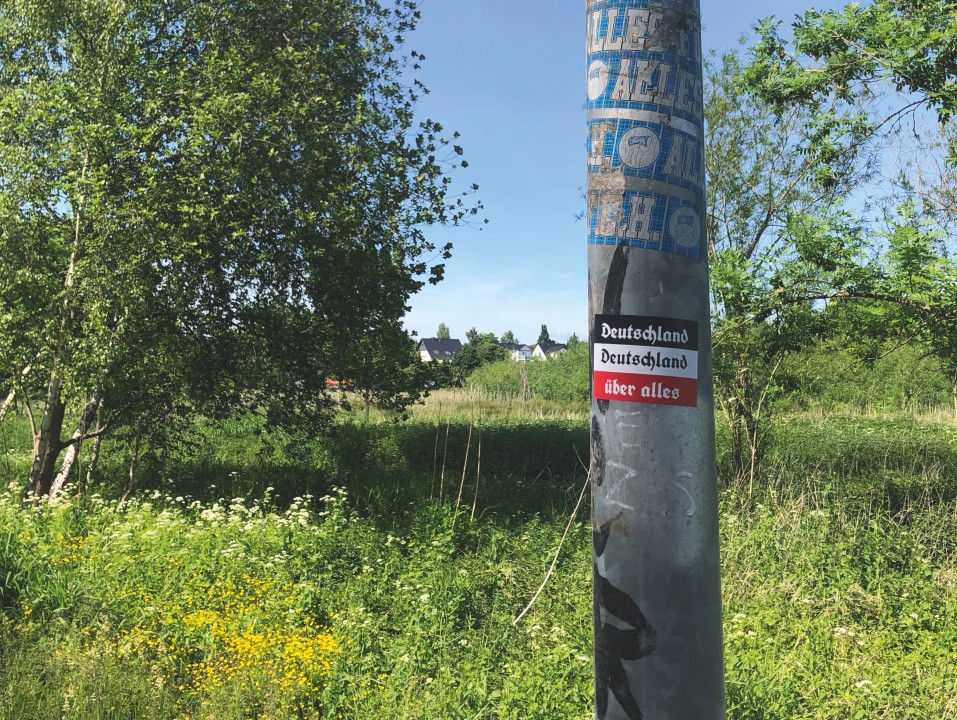
Contract workers from Vietnam in the GDR
Contract workers from Vietnam // From the mid-1960s, the GDR concluded so-called "contract worker agreements" with various countries. Particularly noteworthy in this context is the corresponding agreement between the SR Vietnam and the GDR from 1980. It was agreed that Vietnamese people would come to the GDR for four to five years to take up jobs in companies there. For the GDR, it was about recruiting labour. For Vietnam, the focus was on reducing debt and training skilled labour. Until 1986, Vietnam was to regularly send suitable Vietnamese people between the ages of 18 and 35. In return, they sometimes received training as skilled workers and other qualifications. 12% of their gross salary was paid directly to the Vietnamese state. A total of around 200 million GDR marks presumably went to them.
The agreement, which was originally limited until 1986, was extended until 1990 after some negotiations. As a result, around 60,000 Vietnamese people were living in the GDR in 1989, making them the largest group of contract workers. They were important workers who, for example, worked in the Hanseatic city of Rostock in the textile company "Shanty", for the German Reichsbahn or at the shipyard.
Life for the Vietnamese was characterised by stringent restrictions: they had to pay 30 GDR marks in rent for their living space in the dormitories, which was often only 5-6 square metres. They were spied on by the party secretaries in the group and by the state security in the dormitories, and pregnant Vietnamese women only had the choice between having an abortion or going home.
After the end of the GDR, Vietnamese people who wanted to stay in the new Federal Republic of Germany fought until 1997 to have their years of residence recognised. Many took advantage of the opportunity to become self-employed in order to be able to stay in Germany. Countless restaurants, textile shops and flower shops still characterise the cityscapes of the East German federal states today, reminding us of the history of contract workers.
Persecuted Sinti and Roma people
Persecuted Sinti and Roma people // The Sinti and Roma have been residents of Mecklenburg-Western Pomerania for centuries. They belong to a minority that has had to fight against prejudice throughout Europe for centuries and is subject to marginalisation and discrimination. The peak of discrimination against Sinti and Roma was reached during the Nazi era, when they, like the Jewish population, were victims of "eugenics" and "racial hygiene" and, of course, the National Socialist genocide (Scriba, 2014).
The satellite camps of the concentration camps in Mecklenburg-Western Pomerania are among the places of exploitation, reprisals and violence against prisoners during the Nazi era. There is evidence of 43 satellite camps at Ravensbrück concentration camp, 14 of which were located in what is now Mecklenburg-Western Pomerania. Another four satellite camps of the Neuengamme concentration camp were also located in this area (Info Nordost, 2016). These include, among others, the Wöbbelin satellite camp (State Centre for Civic Education, 2020), Malchow, Barth, Neustadt-Glewe, Stargard Castle and Boizenburg (Zeitlupe, n.d.). There are no statistics or counts on Sinti and Roma living in Mecklenburg-Western Pomerania today.
Migration in Mecklenburg-Western Pomerania after 1945
Migration after 1945 // Mecklenburg-Vorpommern experienced the largest immigration movement in its history to date following the end of the Second World War in 1945 Around 910,000 people – refugees, resettlers, and prisoners of war - migrated to the territory of today's federal state. They were distributed throughout Mecklenburg-Vorpommern, with a particularly high proportion in the north-western and central districts of Mecklenburg, including Wismar, Schönberg, Güstrow, and Schwerin. An important social factor at the time was the land reform, in which 2.2 million hectares of land were allocated to resettlers and refugees and their family members. Numerous family stories in Mecklenburg-Vorpommern are shaped by this history.
Conclusion
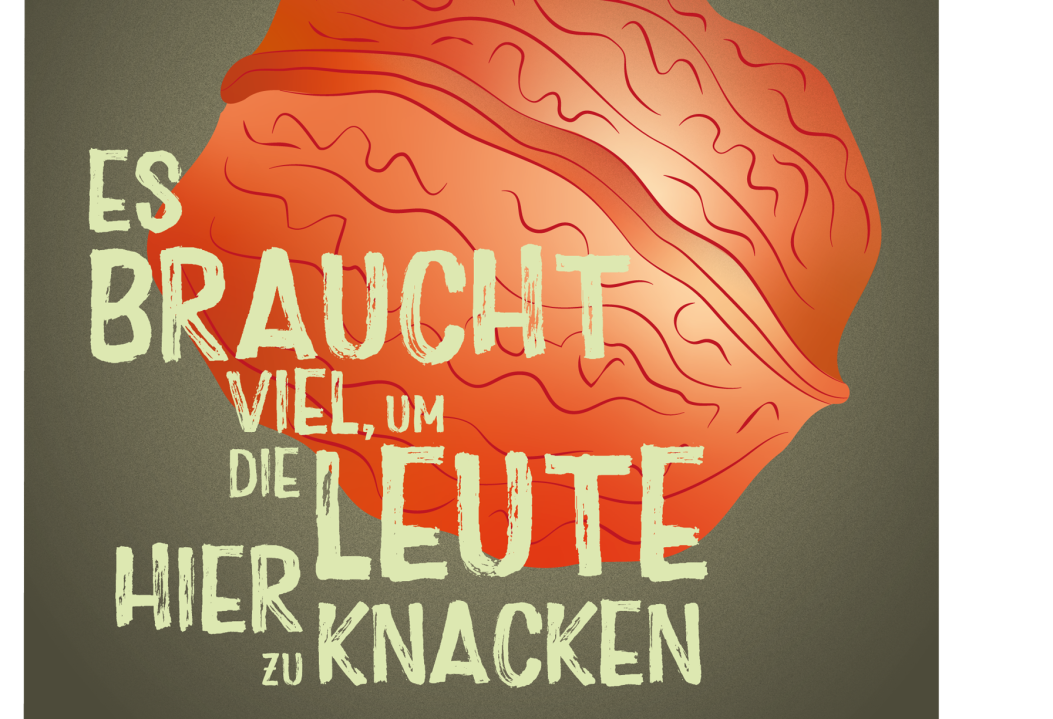
When it comes to migrant experiences in Mecklenburg-Vorpommern, many people have the images of Rostock-Lichtenhagen in mind. The study documented here impressively demonstrates that experiences of discrimination and racism are still diverse and commonplace for those affected today. It should also be noted that Mecklenburg-Vorpommern is a federal state that has been characterised by immigration in its recent history too. Nearly one million Germans fled to the region after the end of World War II. Thousands of contract workers have lived and worked here since GDR times. In 2015 and 2016, the federal state took in around 23,000 people who were forced to flee. Given this context, it is evident that there must be countless stories of encounters, mutual influence, and integration. Today, many residents and a broadly based organised civil society also stand for encounters, support, and dialogue. Embracing the reality of a migration society signifies a collective effort to shape everyone's future and foster a sense of unity and coexistence in diversity within a pluralistic democracy.
It takes a lot to truly connect with people here, to engage them in more than just a cursory "Good day," and perhaps delve into deeper, more meaningful conversations that go beyond mere pleasantries. Nevertheless, it was encouraging to see that, despite the challenges, it is possible. Taking the first step alone requires much more effort.
Quellen
Anders, D. (2018): Über den Zusammenhang von Akkulturation und psychischer Gesundheit von Migranten am Beispiel von Russlanddeutschen in Mecklenburg-Vorpommern.? Universität Greifswald. https://epub.ub.uni-greifswald.de/frontdoor/deliver/index/docId/2590/file/DissertationDavidAnders121112.pdf, [13.06.22].
Himmler, B. (Hrsg.) (2016): Die Heimat eine Hölle. Über den Krieg in Syrien, die Flucht und das Ankommen in Mecklenburg-Vorpommern. Friedrich-Ebert-Stiftung e.V. Schwerin. https://library.fes.de/pdf-files/bueros/schwerin/13173.pdf, [30.05.2022].
Himpel, M. (2014): Vietnamesische VertragsarbeiterInnen nach der Wende. Der Weg in die Selbstständigkeit als einzige Rettung. In: Südostasien. 2014. Nr. 4. S. 8-9.
Gatzke, Nils (2012): Das Polenbild in Deutschland – Entstehung und Gegenwart. In: Regionale Arbeitsstelle für Bildung, Integration und Demokratie (RAA) Mecklenburg-Vorpommern e. V. (Hrsg.): Probleme mit Polen? Polenbezogene Ressentiments in Vorpommern. Waren (Müritz) 2012, S. 12-19. https://nbn-resolving.org/urn:nbn:de:0168-ssoar-338529 [25.05.2022].
Łada, A. /Segeś Frelak, J. (2012): Die neue polnische Migration nach Deutschland aus lokaler Perspektive. In: (Hrsg.): Polen Analysen Nr. 111, 2012, S. 2-13. https://laender-analysen.de/polen-analysen/111/die-neue-polnische-migration-nach-deutschland-aus-lokaler-perspektive/ [28.04.2022].
Rutkowska, B. (2019): Zamieszkujac „Pogranicze“. Migracja Przygraniczna z Polski do Niemiec w doświadczeniach Dzieci i rodzicoẃ. Warszawa. https://rcin.org.pl/Content/113629/WA308_142032_P325_Zamieszkujac-pograni_I.pdf [28.04.2022].
Scriba, A. (2014): Ausgrenzung und Verfolgung von Sinti und Roma. https://www.dhm.de/lemo/kapitel/ns-regime/ausgrenzung-und-verfolgung/ausgrenzung-und-verfolgung-von-sinti-und-roma.html, [08.06.2022].
Schmohl, D. (2016): Rom_nja und Sint_ezze in der SBZ und DDR. Ausgrenzung, (Nicht-)Entschädigung und Wahrnehmung. In: Krahl, K.; Meichsner, A. (Hrsg.): Viele Kämpfe und vielleicht einige Siege. Dresden: Heinrich-Böll-Stiftung Sachsen, S. 93-98.
Weiß, W. (2004): Regional-Demographie Mecklenburg-Vorpommerns von 1945 bis 1990. In: Werz, N.; Nuthmann, R. (Hrsg.): Abwanderung und Migration in Mecklenburg und Vorpommern. Wiesbaden: Springer VS, S.159-182.
Zeitlupe (o.J.): KZ-Außenlager Neubrandenburg (Waldbau). Verfügbar unter https://zeitlupe-nb.de/de/ort/kz-aussenlager-neubrandenburg-waldbau [31.05.2022].
